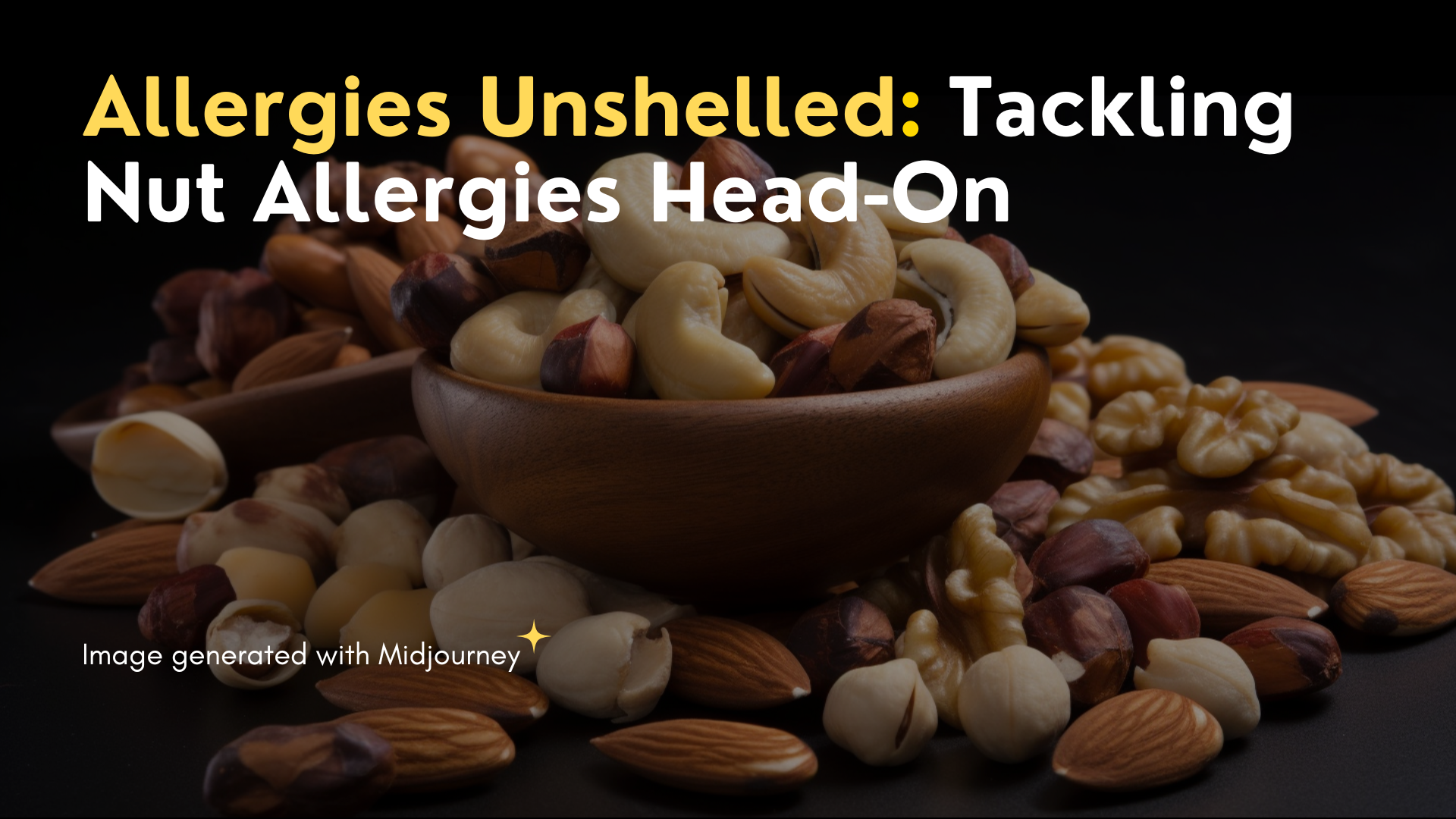Published Date January 24, 2003
Decoding Nut Allergies: Navigating a Nut-Free World
By Naurin Ansari
3 min read
Last update date: January 24, 2003

Living with a nut allergy requires careful attention and proactive management to avoid potential allergic reactions. Nut allergies are a common form of food allergy and can vary in severity from mild discomfort to life-threatening anaphylaxis. In this blog, we will explore what nut allergies are, how they are diagnosed, and the foods to avoid if you have a nut allergy.
What is a Nut Allergy?
A nut allergy is an adverse immune response to proteins in specific nuts. It affects approximately 1-2% of the global population. It occurs when the immune system reacts negatively to proteins found in certain types of nuts. These proteins are perceived as potential threats, triggering an allergic reaction. Even a small amount of nut protein can lead to symptoms if ingested or inhaled.
While almonds, walnuts, and pecans are included in nut allergies, it is important to distinguish that a peanut allergy is not categorized as a nut allergy. The most common nut allergies arise from cashew, walnut, hazelnut, and pistachio. Cashew allergies are the most prevalent, followed by walnut allergies. Notably, even small amounts of cashews and pistachios can induce severe reactions compared to other tree nuts.[1][2]
Diagnosis of a Nut Allergy
When diagnosing peanut and tree nut allergies, it is essential to gather specific information to provide an accurate assessment. Here are the key points involved in the diagnostic process:
- Medical History: The doctor will review the patient's medical background, including any previous allergic reactions, family history of allergies, and exposure to nuts.
- Physical Examination: A thorough examination will be conducted on you to check for visible signs of an allergic reaction or related symptoms.
- Allergy Testing: To confirm the nut allergy, specific allergy tests are used, such as a skin prick test or blood test (immuno cap). These tests detect allergen-specific immunoglobulin E or assess the skin's reaction to nut extracts.
- Oral Food Challenge Test: In some cases where the test results are inconclusive, an oral food challenge test may be necessary. This test involves supervised ingestion of small amounts of the suspected allergenic nut in increasing doses to observe any allergic reactions.[3]
Foods to Avoid if You Have a Nut Allergy
People with nut allergies must exercise caution to prevent allergic reactions. Here are important points to consider regarding the consumption or use of various items:
- Desserts, Sauces, and Baked Goods: Exercise caution when consuming desserts, sauces, and baked goods, as they often contain nuts or nut extracts such as almond extract.
- Packaged Mixes: Check the ingredients of packaged mixes, as they may contain nuts or nut-related components.
- Nut Butter and Nut Oils: Avoid nut butter like almond, cashew, and peanut butter, as well as nut oils, including cold-pressed or expressed peanut oil.
- Hydrolyzed Plant/Vegetable Protein: Be mindful of foods that contain hydrolyzed plant or vegetable protein, as they can potentially include peanuts.
- Peanut Flour and Nut Pastes: Stay away from peanut flour and nut pastes, which can be found in various food products.
Remaining vigilant about food consumption is crucial for individuals with nut allergies. Carefully reading food labels to identify potential nut ingredients is important. Consider cross-contamination risks in baked goods, cereals, chocolate, ice cream, and processed foods. Nut-free alternatives like sunflower or pumpkin seeds, roasted chickpeas, or soy-based products can be explored, but be cautious of possible cross-reactivity to seeds.[4][5]
Takeaway
Living with a nut allergy requires careful management, including understanding the signs and symptoms of an allergic reaction, obtaining a proper diagnosis, and diligently avoiding nut-containing foods. By taking necessary precautions, reading food labels, and communicating your allergy to others, you can minimize the risk of accidental exposure and enjoy a safe and healthy lifestyle.
If you suspect a nut allergy or experience any concerning symptoms, it is crucial to consult with a healthcare professional for a proper diagnosis and personalized guidance. Remember, knowledge, preparedness, and proactive measures are key to effectively managing a nut allergy and ensuring your overall well-being.
References
Living with a nut allergy requires careful management, including understanding the signs and symptoms of an allergic reaction, obtaining a proper diagnosis, and diligently avoiding nut-containing foods. By taking necessary precautions, reading food labels, and communicating your allergy to others, you can minimize the risk of accidental exposure and enjoy a safe and healthy lifestyle.
If you suspect a nut allergy or experience any concerning symptoms, it is crucial to consult with a healthcare professional for a proper diagnosis and personalized guidance. Remember, knowledge, preparedness, and proactive measures are key to effectively managing a nut allergy and ensuring your overall well-being.
Keep reading
Choose Healthy With Us.
Know the real truth about your food. Stay informed and healthy, for free.

Download the App Now
Certified nutritionists trust our food recommendations. Safe to say, so can you :)














